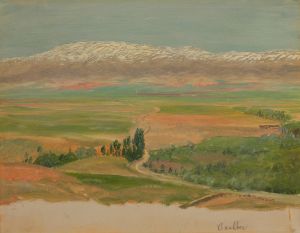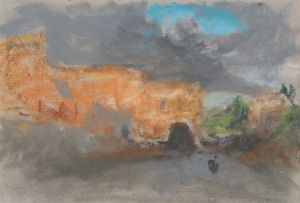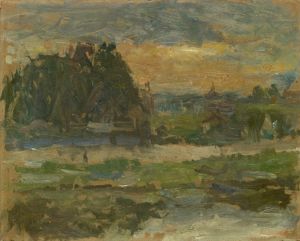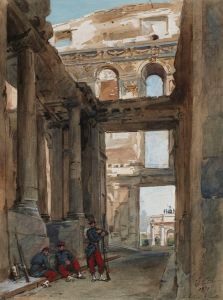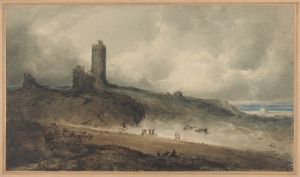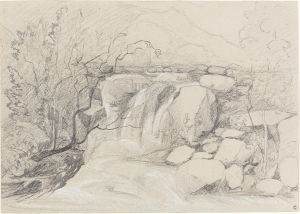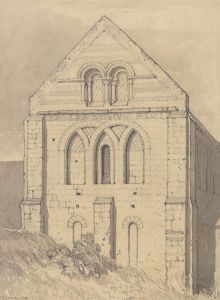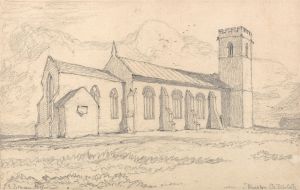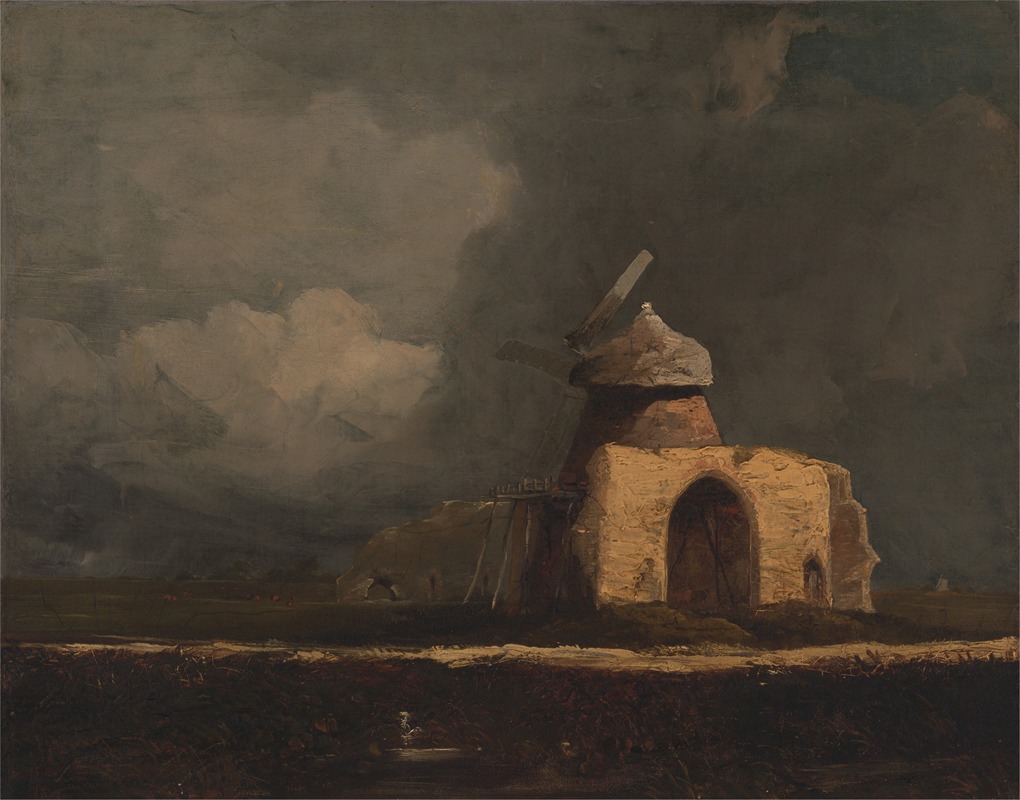
St. Benet’s Abbey
A hand-painted replica of John Sell Cotman’s masterpiece St. Benet’s Abbey, meticulously crafted by professional artists to capture the true essence of the original. Each piece is created with museum-quality canvas and rare mineral pigments, carefully painted by experienced artists with delicate brushstrokes and rich, layered colors to perfectly recreate the texture of the original artwork. Unlike machine-printed reproductions, this hand-painted version brings the painting to life, infused with the artist’s emotions and skill in every stroke. Whether for personal collection or home decoration, it instantly elevates the artistic atmosphere of any space.
St. Benet’s Abbey by John Sell Cotman is a notable watercolor painting that captures the evocative ruins of St. Benet's Abbey, located in Norfolk, England. John Sell Cotman, an influential figure in the Norwich School of painters, is renowned for his landscape and architectural works, and this painting is a testament to his skill in capturing the essence of historical architecture through his art.
St. Benet's Abbey, originally founded in the Anglo-Saxon period, holds a significant place in English history. It was established around the year 1020 and became one of the wealthiest Benedictine monasteries in Norfolk. The abbey's prominence continued until the Dissolution of the Monasteries under King Henry VIII in the 16th century, which led to its decline and eventual ruin. Today, the site is marked by the remains of the gatehouse and the windmill that was later built into it, creating a unique architectural feature.
Cotman's depiction of St. Benet’s Abbey is celebrated for its atmospheric quality and attention to detail. The painting showcases the ruins amidst a serene landscape, highlighting Cotman's ability to convey the passage of time and the enduring beauty of historical structures. His use of light and shadow, along with a delicate color palette, brings a sense of tranquility and reverence to the scene. This work is a fine example of Cotman's mastery in watercolor, a medium that allows for subtle gradations and a luminous quality that enhances the ethereal nature of the subject.
John Sell Cotman was born in 1782 in Norwich, England, and became a leading figure in the Norwich School, a group of artists known for their dedication to capturing the natural beauty and rural life of Norfolk and its surroundings. Cotman's work is characterized by its precision, clarity, and a keen observation of nature and architecture. He traveled extensively throughout England and Wales, drawing inspiration from the landscapes and historical sites he encountered.
The painting of St. Benet’s Abbey reflects Cotman's interest in the interplay between nature and architecture, a theme prevalent in his body of work. His ability to render architectural details with accuracy while maintaining an overall sense of harmony and balance is evident in this piece. Cotman's work was influential in the development of landscape painting in England, and his techniques and compositions continue to be studied and admired by artists and art historians alike.
St. Benet’s Abbey by John Sell Cotman remains an important work within the context of British art history, not only for its artistic merit but also for its documentation of a significant historical site. The painting serves as a visual record of the abbey's enduring legacy and Cotman's contribution to the appreciation and preservation of England's architectural heritage. Through his art, Cotman invites viewers to reflect on the passage of time and the stories embedded within the ruins of the past.







